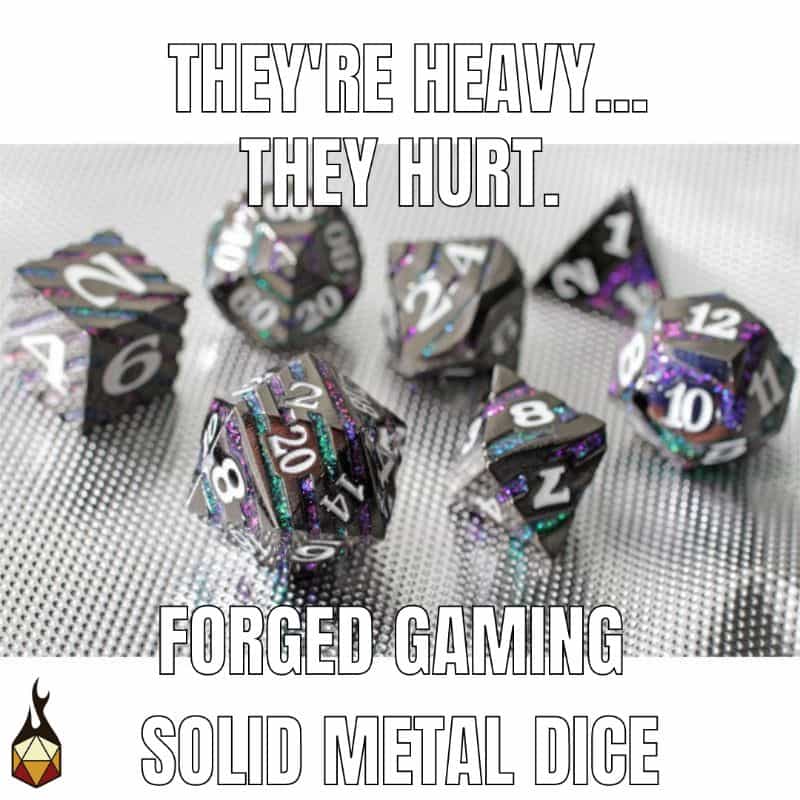Imagine walking through the enchanting lanes of Disneyland, each step unlocking a new realm of fantasy and adventure. Now, picture a small lump in your shoe, barely noticeable at first but growing into an unbearable discomfort as the day progresses. This was my reality during a visit to Disneyland, where I walked more than 20,000 steps. Look, even the smallest itch becomes a burning hole in your skin if you can’t scratch it. The experience made me think about the how crucial it is to be comfortable in any professional environment, as even the smallest problems can overwhelm you if given sufficient time to bother you.
In this article, I underscore why “comfort” should be a priority in the miniature painting hobby, especially if you’re serious about it and want to get as many of those obstacles out of your way. The hobby is already difficult and expensive, why make it even harder? Here, I’ll go through some of my favorite tools and ways to improve the miniature painting experience in terms of comfort.
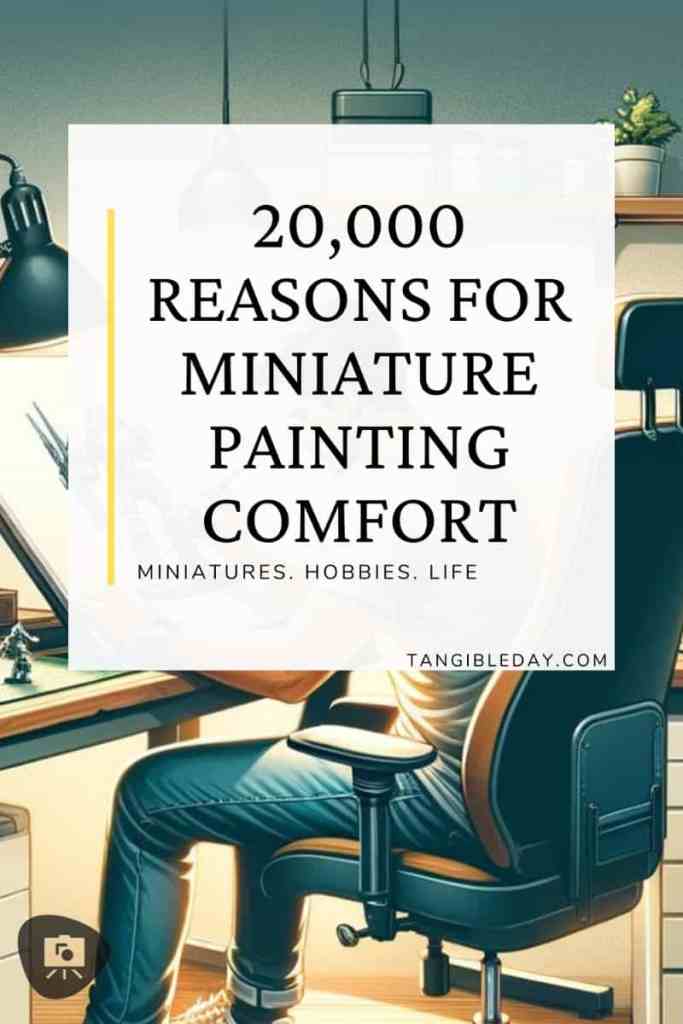
The Journey of Discomfort: A Disneyland Lesson
So, as I mentioned earlier, I came up with this article during a short trip to Disneyland in Anaheim, California. I walked a ton that day. But a small lump in my sneaker, initially a minor annoyance, became a source of significant pain after hours of walking. And, then I realized what I had done.
I purchased “cheap” walking shoes because, well, I wanted to save money. But ultimately, the sneaker didn’t fit as well as it could have. Either I didn’t give it enough time to break in or the quality of the build wasn’t sufficient to support me for hours and hours of walking.

As I meandered through Tomorrowland, I realized the same was true for working in the miniature painting hobby. (Indeed my mind wanders when I walk to things that have no relevance to my immediate surroundings!)
Suffice it to say, this experience mirrors the journey of many hobbyists who may overlook the subtle discomforts of inadequate tools or workspaces, only to find their passion hindered by preventable pains and strains over time.
The Link Between Ergonomics and Hobbies
Ergonomics, the science of designing workspaces, tools, and tasks to fit the user, is often associated with office jobs or physically demanding work (source). However, its principles are equally vital in the realm of hobbies, especially those requiring precision and patience, like miniature painting.
The right ergonomic setup can prevent injuries, enhance comfort, and improve overall enjoyment and productivity. When it comes to painting and working in miniature for long periods of time, even the slightest misalignment in your chair, the way you hold your brush, or posture your body over your hobby desk can become a source of pain and discomfort. As you read on, I’ll show you a few things I use to help me paint comfortably and safely.
Here are a few quick ideas:
One of the most important aspects of an ergonomic setup is having a chair that supports your body properly. Look for a chair with adjustable height and lumbar support, as well as armrests that can be adjusted to fit your arms comfortably.
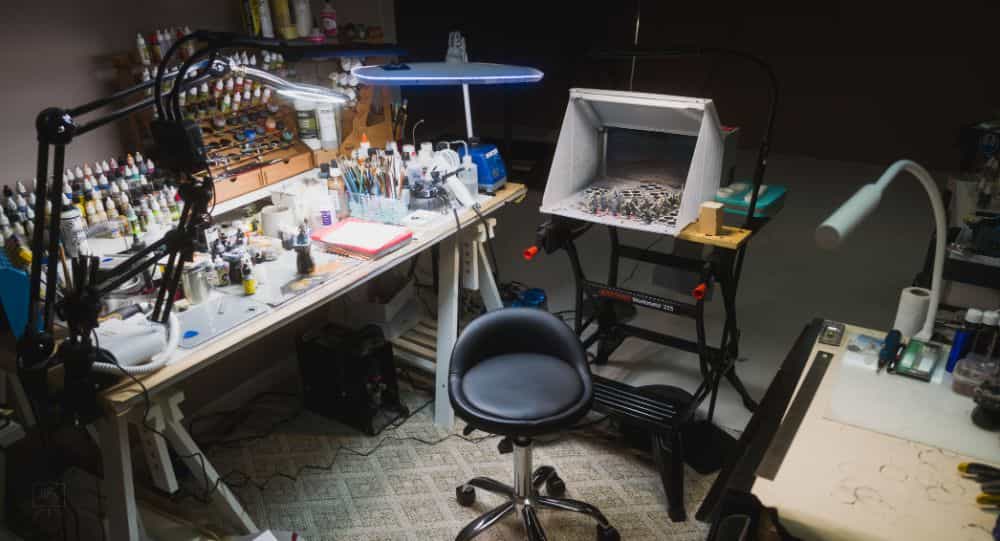
I use a video gaming chair that doubles as an excellent hobby chair. It has all the bells and whistles you’d be looking for when sitting for a long period of time. If you shop around, you’ll also notice that they are super affordable as compared with “professional office chairs”.

A good chair will help you maintain good posture and reduce strain on your back, neck, and shoulders while you work.
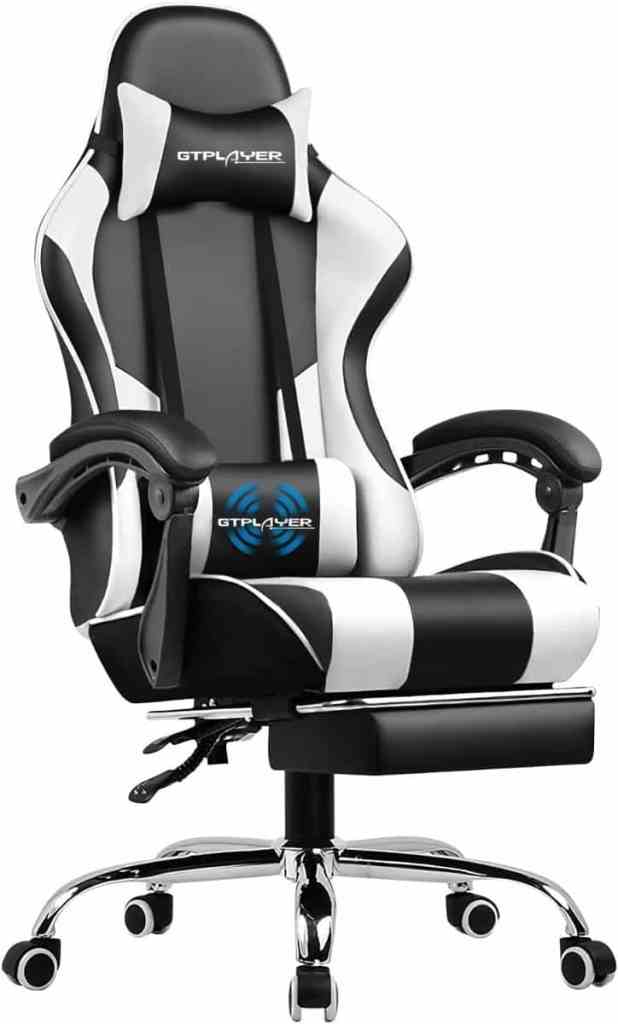
Next, consider the placement of your painting surface or hobby desk. It should be at a comfortable height so that you don’t have to strain your arms or back to reach it. You can see an article where I write about how my ideal hobby desk setup evolved over the years.
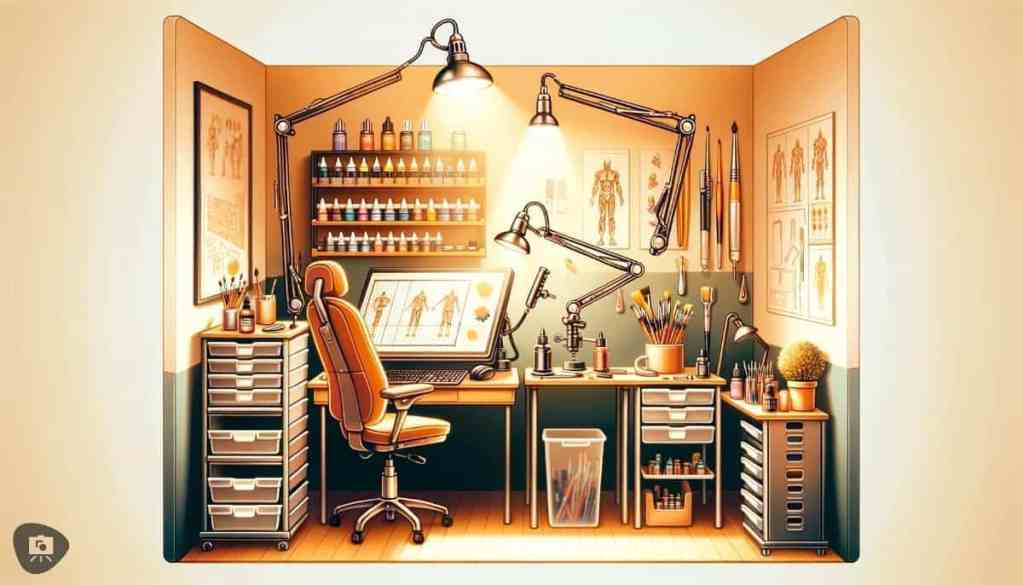
If possible, try using an angled desk (not too steep) to promote better posture while painting. You may also want to invest in a footrest if you are on the tad shorter side and find yourself sitting for long periods of time. Having your feet resting flat against a surface will improve the way your back arches behind you and reduce the risk for aches and pains in your lower body.
Why Invest in Quality and Ergonomic Tools?
Investing in high-quality, ergonomic tools and equipment is not merely a luxury but a necessity for any serious hobbyist. Quality tools are designed to fit the hand comfortably, minimize effort, and reduce the risk of musculoskeletal issues, ensuring that your hobby remains a source of joy rather than discomfort.
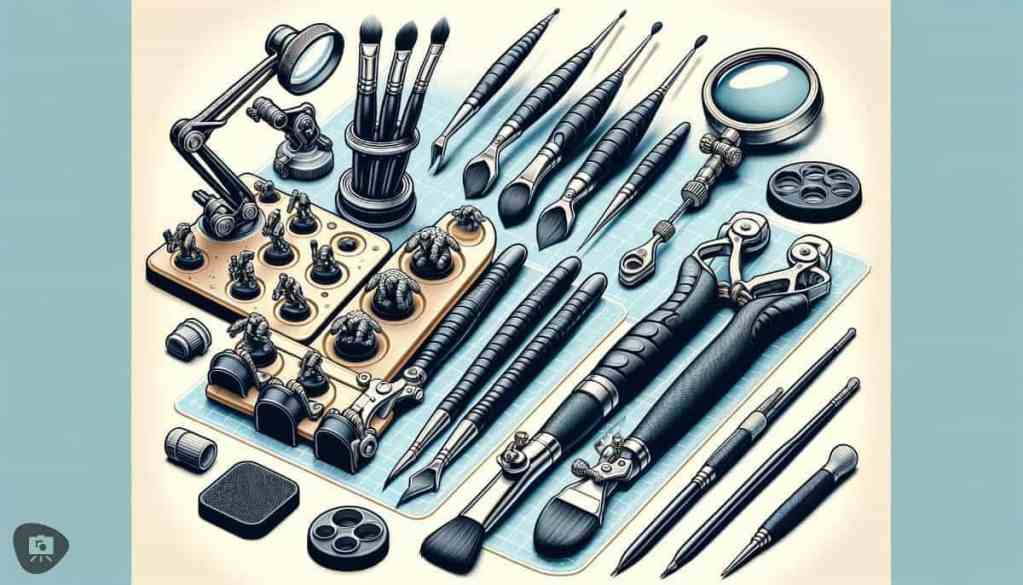
Ergonomic Essentials for Miniature Painters
For miniature painters, creating a comfortable and efficient workspace involves several key components:
Desk Lighting Systems
Proper lighting is crucial to avoid eye strain and ensure that you can see your work in clear detail. Here are the lights I use for those long nights (or weekends) at the hobby painting desk.

- Redgrass Creative R9 Task Lamp (Full Review) – Great dual LED bars (each panel rotates independently), fully adjustable stiff swing arms to place the bright, diffuse lighting right where you need it. Neutral color temperature light output with super high CRI (i.e., color rendering index) for accurate color reproduction, which is great for painting minis and photography! Ergonomically, the R9 task lamp has a great degree of movement, and once you place it where you need the light, it stays there. No wiggles. A single button operates the on/off function with a press/hold operation for adjusting the step-less dimming adjustment.
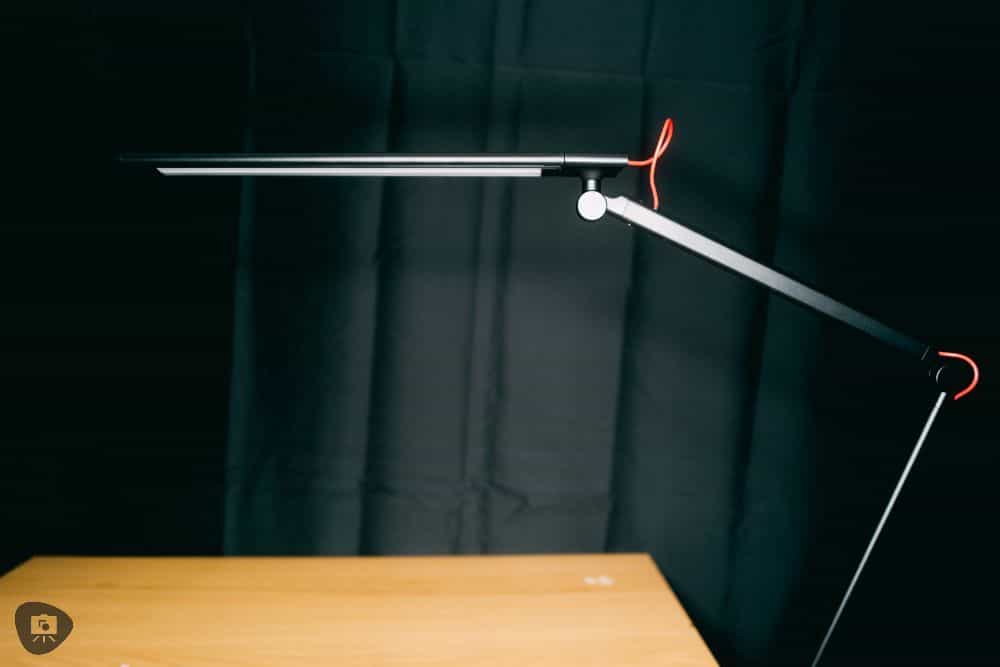
- Neatfi XL Task Lamp (Full Review) – This is my longest running task lamp for painting miniatures. It’s a much more budget-friendly option than the “pro” lamps out there. For the longest time, this is all I used to paint by. It is a cool-neutral lighting system, not exactly perfect, but I love how easy it works. From a comfort standpoint, I painted solely with this lamp for years as a commissioned miniature painter and it has never failed me. I continue to use this as a supplement to my other lighting systems for photography and videography
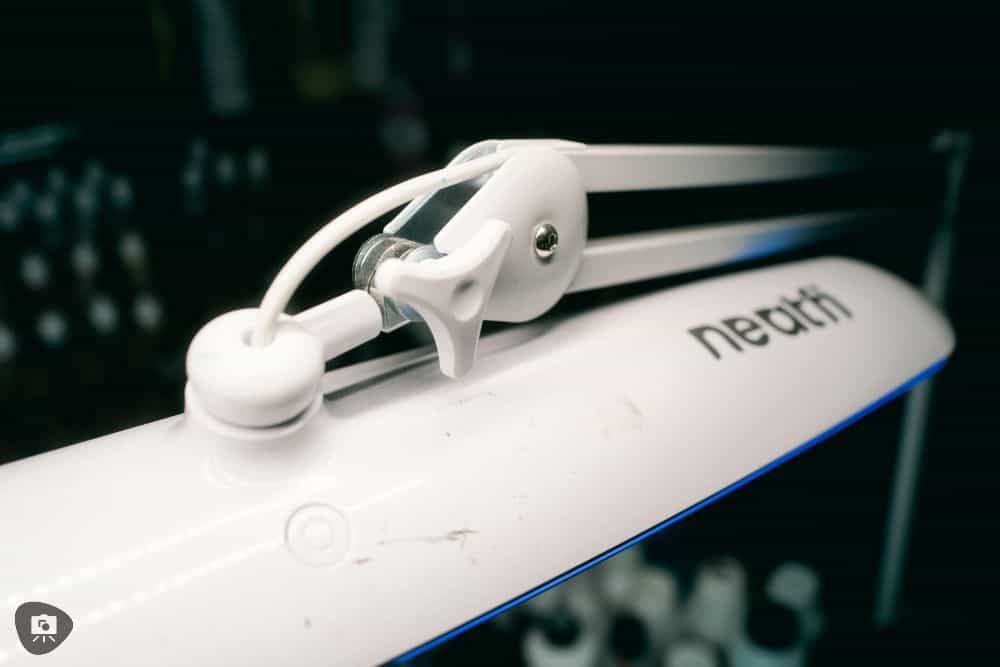
Optical Assistance
- Optivisor headband magnifying lens (Review and comparison) – Over the years, I’ve come to rely on magnifying aids for painting freehand designs on miniatures. The extra magnification helps to keep my hand steady for those meticulous movements you need for detailed work. While, a magnifying lamp may work, I find that a headband visor works better for longer painting sessions. They are more comfortable. It does take practice to use any optical aid for painting miniatures. Make sure you have sufficient focal length to work under the magnifying lens; otherwise your paint brush will bump into your headband visor.
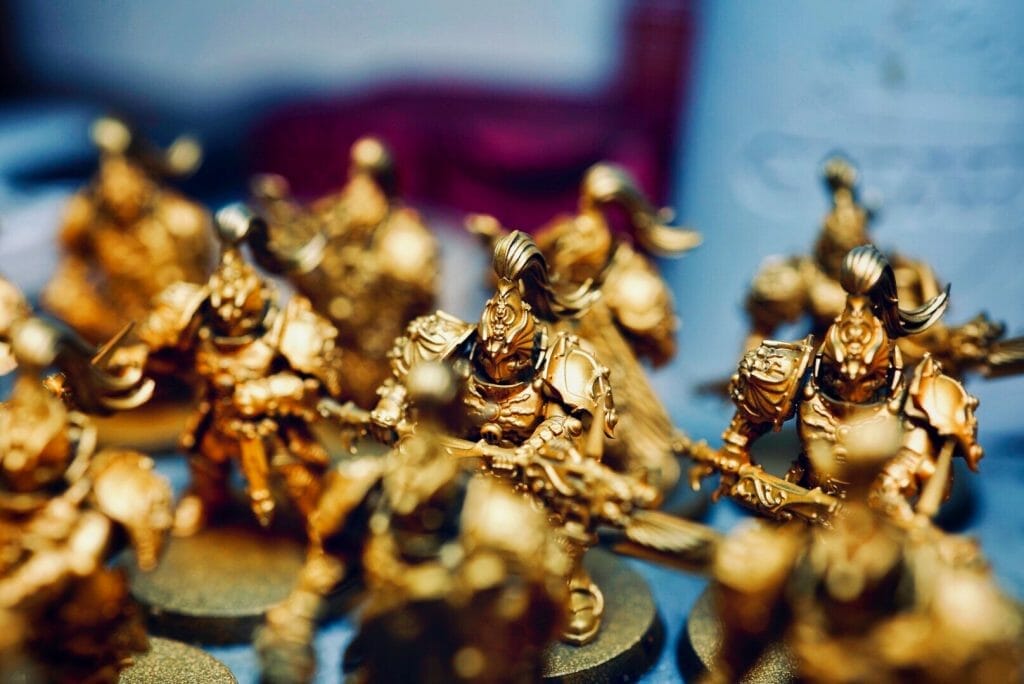

Airbrushes
- Badger Patriot 105 Airbrush (Full Review) – Ergonomically designed airbrushes can help prevent hand fatigue, allowing for longer, more comfortable painting sessions. The Badger Patriot 105 is a fairly dense airbrush, designed for working artists. It’s not flashy, fancy in that shiny way, but it will get the job done and won’t let you down. When I’m looking for a reliable workhorse airbrush, I reach for my 105 every time. It is comfortable and steady to use for long periods of time. The extra heft in the barrel, which is made of solid cut brass with nickel plating, helps keep my spray patterns steady. With practice, I can also use it so spray with finer detail.
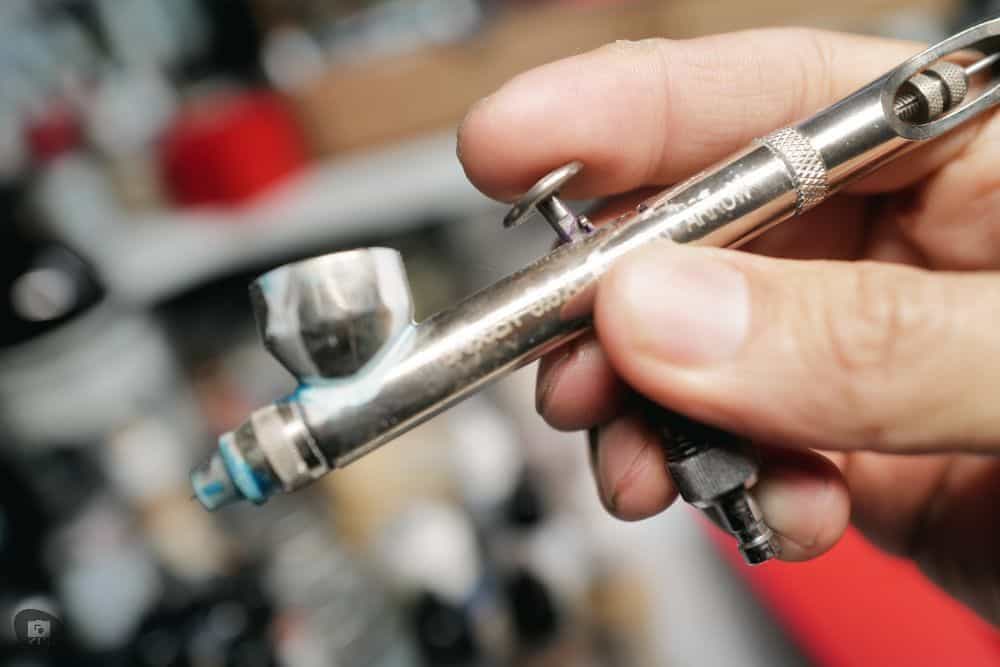
Chairs
- Gaming Chair (Review Coming Soon) – A supportive chair can make a world of difference, allowing you to maintain a healthy posture for hours on end. I find that video game chairs are a wonderfully comfortable choice. They provide fully adjustable height, lumbar, and upper body support. Some even come with a lower back massage function (which I don’t use much, admittedly). The wheels also make it easy to move around when needed, and the armrests are a great addition for those short moments where you may want that extra arm stability.

Note that I don’t recommend using arm rests for long periods of time painting miniatures. They can actually hurt you, as your posture won’t give you the freedom of movement you’ll want to paint comfortable in the long run. Oh, also be forewarned that you’ll likely have to assemble these chairs… which I personally don’t enjoy. But ultimately, they are worth it since these kinds of chairs end up being worth their time and cost when it comes to supporting our hobby (and our behinds).
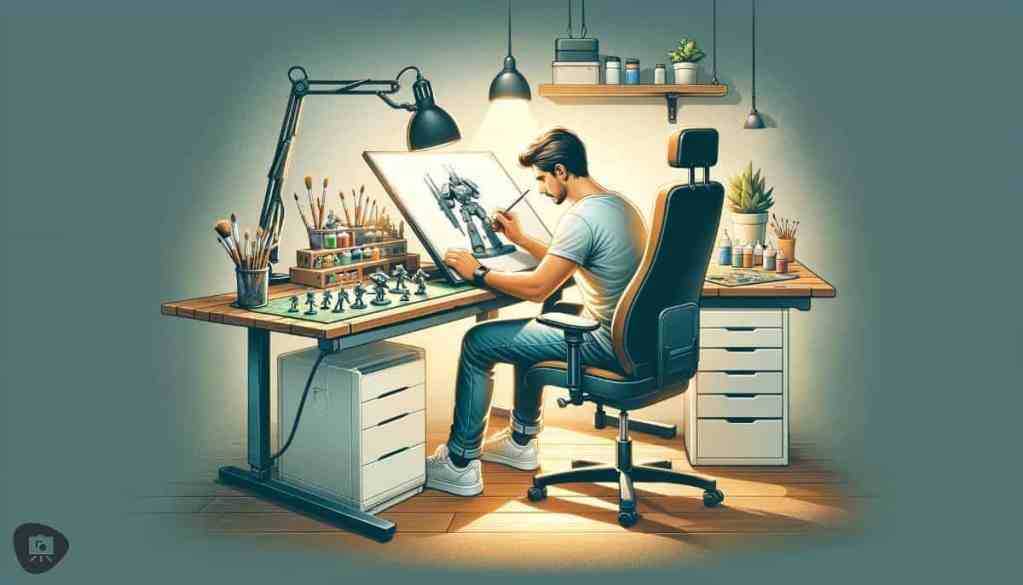
Comfortable Desk Space
Creating an organized and spacious desk setup is crucial for enhancing both comfort and efficiency in any hobby or work area. By prioritizing organization and ample workspace, you not only streamline your workflow but also contribute significantly to a more comfortable and satisfying hobby experience.
- Best Tabletop Organizers for Miniature Hobbies – Every desk space will be different. I can’t actually recommend a single type of organizer, paint rack, or whatnot because I’ve had so many over the years. Each organizer and rack has served a purpose, and I often rotate a few out depending on the project(s) I’m working on. Though, if I had to suggest a all-purpose, single organizer system that I find most useful, it would be the Plydolex system. It’s well-built, simple to assemble, and modular, so it can be configured to fit various sizes of desk spaces.
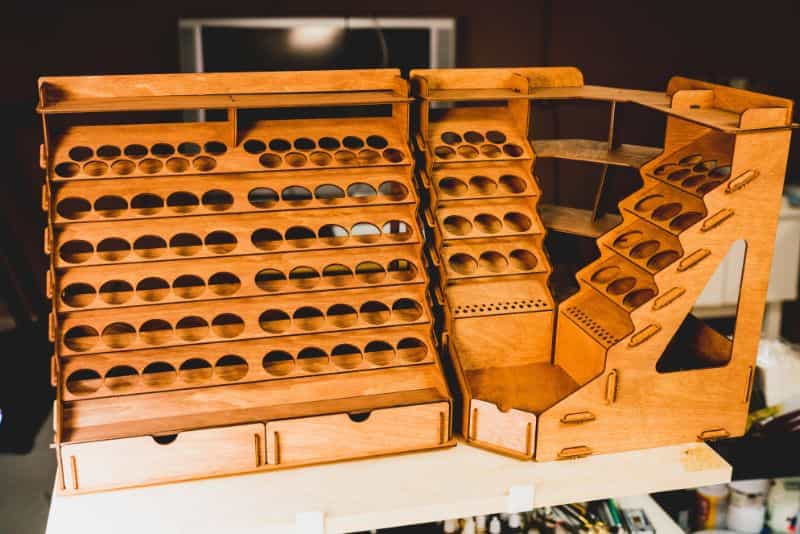
How to Find the Best Desk or Table to Paint Miniatures Comfortably?
The optimal height for a hobby desk is generally around 29 to 30 inches (74 to 76 cm) from the floor, based on average adult ergonomics. This standard ensures a comfortable posture with feet flat on the ground and a natural bend at the knees and elbows. However, for activities like miniature painting, where precision is key, adjustability might be more beneficial.
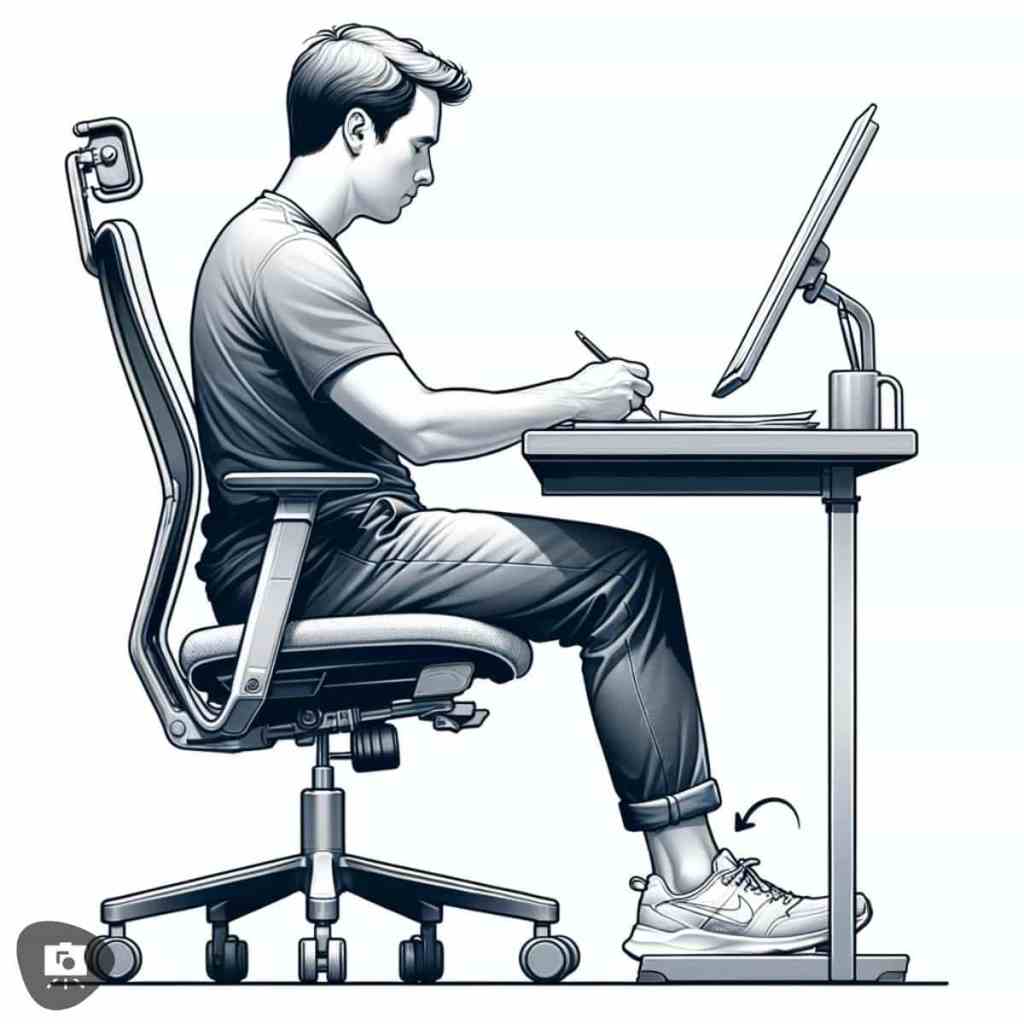
An adjustable desk allows for changes in height and tilt, catering to specific tasks and personal comfort, helping to minimize strain on the neck and back. If you engage in detailed work, a slightly higher desk might be preferable to bring your work closer to eye level, promoting better posture. But in this case, you’ll also want a chair or seat that can accomodate the extra height if needed.
My Hobby Desk Top Surface
I use these LAGKAPTEN/MITTBACK desks from IKEA for all of my hobby work, because they are affordable and have adjustable heights with a simple keyed pin system. Alternatively, you can get an adjustable standing desk, which performs similarly.

The main goal is to maintain a relaxed posture, with arms resting comfortably and minimal strain on your eyes, neck, and back. Again, be aware that the chair and desk you choose go together.
Conclusion
The lesson learned from a long day of walking at Disneyland is a valuable one: even the smallest discomfort can become a significant barrier over time. In hobbies like miniature painting, where precision and patience are paramount, the importance of investing in quality, ergonomic tools cannot be overstated. By prioritizing comfort and ergonomics in our hobby setups, we can ensure that our pursuits remain pleasurable and sustainable in the long run.
Anyway, I hope this quick overview article gave you some ideas for how to improve your hobby setup. Be it a comfortable chair, an adjustable desk or even just proper lighting, making these small adjustments can have a big impact on our overall enjoyment and productivity in miniature painting.
If you have any questions or comments, I’d love to hear from you. Until next time, happy miniature painting! Stay comfy!

Tangible Day on YouTube (Miniatures and More!)




